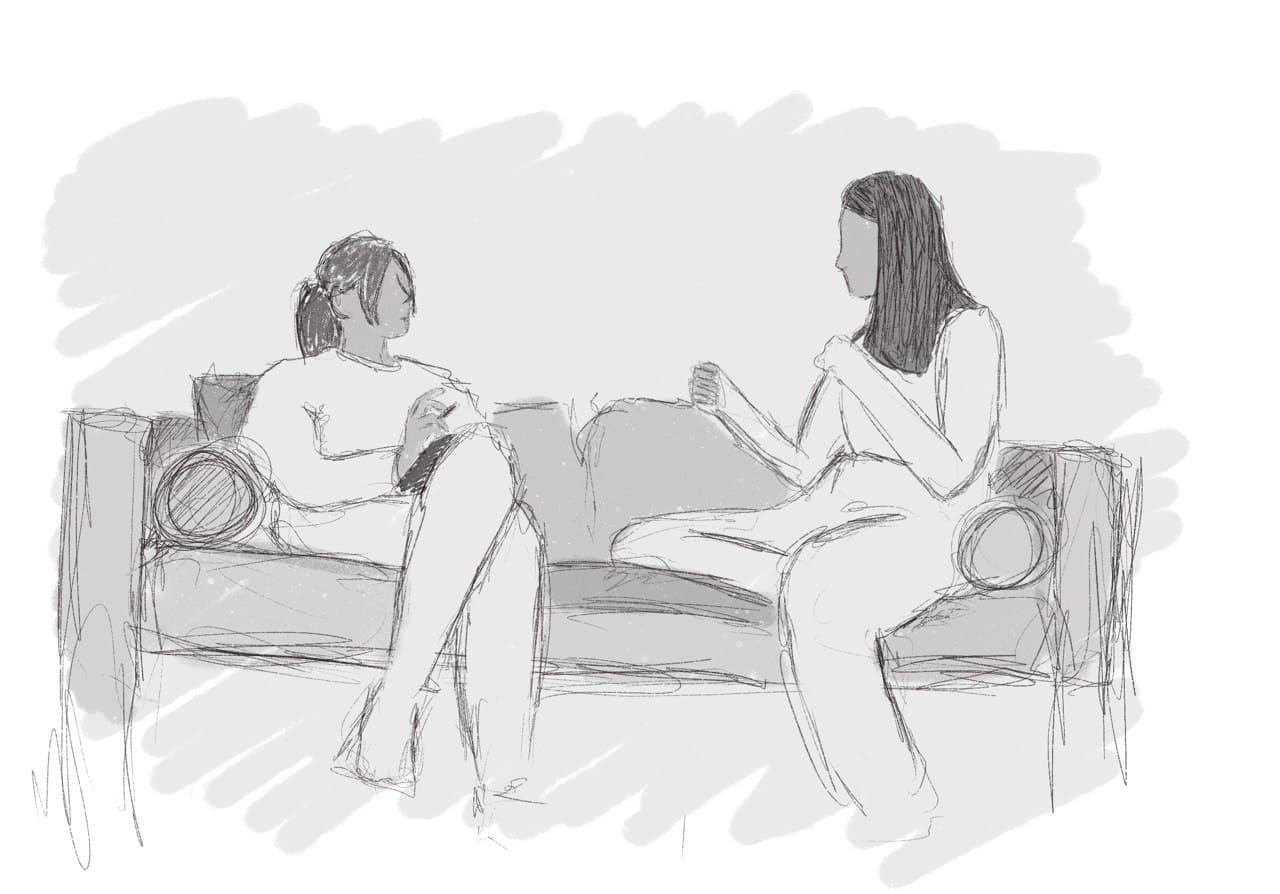November 2021
Group: Tatiana Bohsali, Maria Shuttleworth
Group: Tatiana Bohsali, Maria Shuttleworth
Since we decided not to proceed with making a workshop that would test how people interact with each other depending on whether they are strangers or friends, we thought that the way to go would be to test things ourselves first. We felt very confused as to what the workshop would reveal and how exactly we should do it so before we contacted any more people to help us, we decided to do some bodystorming. We wanted to explore the dynamic and the communication that is happening during interpersonal language exchange as this was an aspect that a lot of people pointed out is missing in modern language learning channels. We also wanted to try and see how we can bridge the gap between physical and digital since we wanted to do both. We were also hoping this would help to really focus our attention on one specific aspect.
Overall we did three different bodystorming sessions. Each of these sessions lasted for about 15-20 minutes and the goal was to immerse ourselves in different situations. To test different things we made each session to be unique in its structure.
Bodystorming: French
In the first session, Maria was learning french with Tatiana. This was a fully structured session that involved different conversation prompts that I created for them. These were questions such as 'What's your favourite season and why?', 'What was your first ever job?'. From my observations, I could see that the prompts were very helpful. They really guided the conversation and made it easier for both Tatiana and Maria. It felt vary natural and sometimes they were stirring off into a different topic, but when they didn't know what to say the prompts helped them a lot.


Sketch of Maria and Tatiana during bodystorming. Sketch by me.
bodystorming: Arabic
The next session was between Tatiana and me where I was learning Arabic. This session was completely unstructured and Tatiana had to improvise what to teach me since I had no prior knowledge. Overall, the words she taught me were quite basic and a lot of them were just objects around us since we didn't set the scene or establish a location where we are. I felt very anxious and scared to offend Tatiana in case I pronounced or said something wrong. I could also tell that Tatiana struggled to think of things to teach me.

Sketch of Tatiana and I doing bodystorming. Sketch by Maria.

Notes I took during the bodystorming while learning Arabic. Notes by me.
Bodystorming: Russian
Finally, there was a session where Maria, as a higher intermediate speaker, and I, a native speaker, practised Russian. We have hardly spoke Russian to each other before and when it came to us talking, we felt very stuck. Although we were friends it felt extremely uncomfortable in the beginning as the session we decided to pretend like Maria is visiting my house for a coffee and I needed to teach her. I believe this was due to the fact that she was already experienced and I had no idea what I could teach her. This completely failed after 2 minutes of us trying to say something to each other and we decided to add prompts in a form of questions like we did with French. This helped us a lot and the conversation started flowing.

Maria and I doing the bodystorming. Photo by Tatiana.
Conclusion
I believe this was one of the most useful research methods we have used as we got to experience the language learning process ourselves and observe it too. We made a lot of discoveries regarding the emotional aspect of feeling embarrassing and uncomfortable which highlighted to us the necessity of having structure and guidance in interpersonal language exchange. All of us also took notes during our sessions which again, emphasised the need for having something for note-taking in order to go back to it later and anchor down what we learnt, which was also useful for the person who was teaching in order to explain certain things. Most importantly, it drew our attention to the conversational part of language learning and we realised that we wanted to make something that facilitates smooth and comfortable interaction for both the learner and the teacher.